Easy 2-Minute Habits That'll Save You 20 Hours A Week — At Least
Science-backed techniques you’ve likely never come across before.
 GaudiLab / Shutterstock
GaudiLab / Shutterstock Tired of wading through the two-minute habit swamp? Us, too.
Make your bed. Take 3 deep breaths. Express gratitude. Drink a glass of water. Visualize your goals. Stand erect. Chant "I’m the s***" affirmations. Use a physical alarm clock.
Not bad advice — but rehashed to death.
I’m guilty of contributing a drop or two to this cesspool as well — but this list is a gust of fresh air.
I’ve compiled 8 little-known productivity tactics backed by science — and honed over time.
Unlike most two-minute habits, these are proven to save time and increase your productivity manifold.
Here are easy 2-minute habits to save 20 hours a week — at least:
1. Ivy Lee’s 100-year-old method
Elite productivity coach Ivy Lee has saved top CEOs and entrepreneurs 1000s of hours.
His core method is deceptively simple:
- Before going to bed, jot down your 6 top To-dos for the next day.
- Sort them according to importance.
- The next day, focus only on the first task — until it’s done, don’t touch the other tasks.
- Move on to the next task and continue in a similar fashion.
- Transfer left-over tasks to the next day’s list.
- Rinse and repeat.
Ivy Lee’s method marries ruthless prioritization and a singular disciplined focus.
2. Prioritize tasks with "The Eisenhower Matrix"
The lack of prioritization is the mother of all productivity problems.
Be it for the Ivy Lee method or your own custom prioritization, leverage the Eisenhower matrix.
- Draw a 2X2 matrix with "Importance" on the Y-Axis and "Urgency" on the X-axis.
- Drag and drop your tasks on the basis of their importance and urgency into the matrix.
- Hyper-zone in on the high-high tasks.
- Ignore, delegate, or schedule the rest.
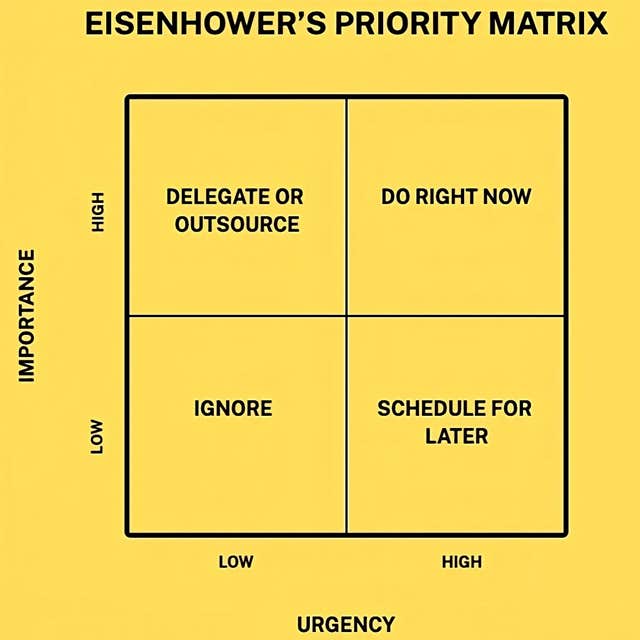
You can leverage the Eisenhower matrix to make better decisions and choices as well.
3. Sync your work with your "ultradian rhythms"
Ultradian rhythms are natural cycles in our body that occur every 90–120 minutes. They include periods of high productivity and energy, followed by rest and recovery.
"Forty-hour workweeks are a relic of the Industrial Age. Knowledge workers function like athletes — train, and sprint, then rest and reassess."
To optimize your productivity, sandwich 90–120 minute work blocks with 10–20 minute breaks to recharge.
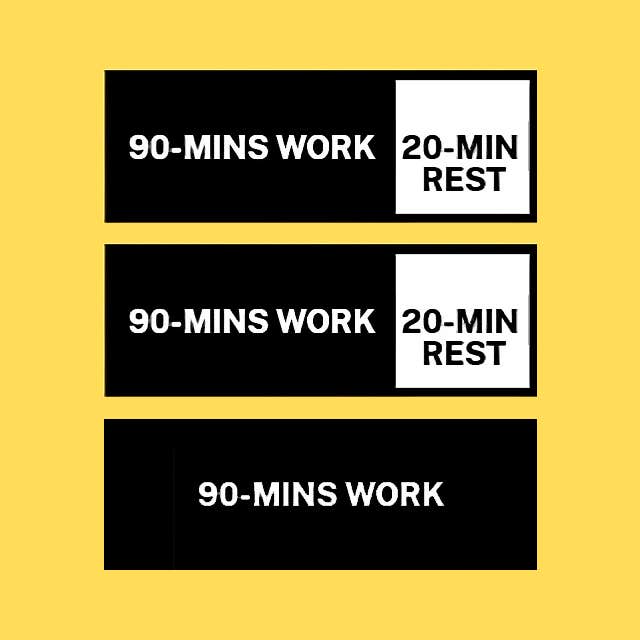
Leverage the blocks when you feel the most energetic to attack your day’s scariest tasks.
For most people, this tends to be first thing in the morning.
4. Prevent time waste with "serial timeboxing"
I stole this game-changer habit from my friend and fellow writer Akshad Singi, MD.
Deciding the day’s tasks and caging them inside rigid time blocks murders the number one time-killer — "analysis paralysis."
When you don’t alternate wall head-banging with Omegle prank videos, you progress fast.
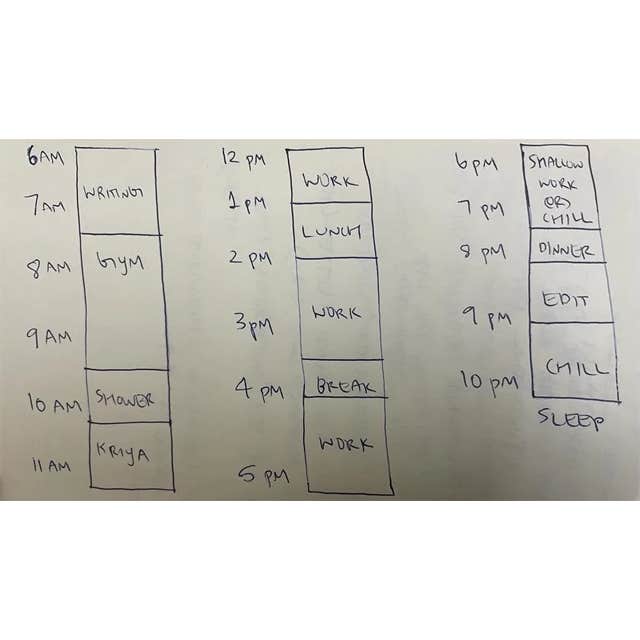
While I’m far from consistent with timeboxing, it’s proven powerful in the few days I’ve used it.
5. The "Pomodoro Technique" with a twist
Unless you get high on flow states, an Ultradian work style might feel torturous.
Rather opt for Pomodoro’s quicker cadence.
But instead of using a boring timer, mix a playlist of songs that add up to 25 minutes. When the music stops, take a 5-minute break.
You can even use Pomodoros inside ultradian sessions.

Instead of fixating on work-rest durations, focus on the ratio.
6. The two-minute journaling method
Journaling is so powerful that Improvement Pill ranked it #1 in his habit tier list.
But wistfully blotting page after page is an impossible luxury in today’s chokingly busy lives.
Hence bullet journaling — unsexy but rapid, simple, and efficient.
"Bullet journaling is among the perfect ways to help you track the past, organize the present, and plan for the future."
I’ve optimized my journaling template so much that it takes less than 2 minutes!
7. Stay consistent with "The Seinfeld Strategy"
Prioritizing, jotting down To-dos, and ticking them off handles the daily level.
What about weekly, monthly, and yearly?
Poor consistency will nullify even the hardest burst of intensity.
The legendary comedian Jerry Seinfeld has a clever solution:
- Set a goal to complete a particular task every day.
- The days you successfully complete the task, mark them off on a calendar with an X.
- Keep this chain of X’s in sight and avoid breaking it.
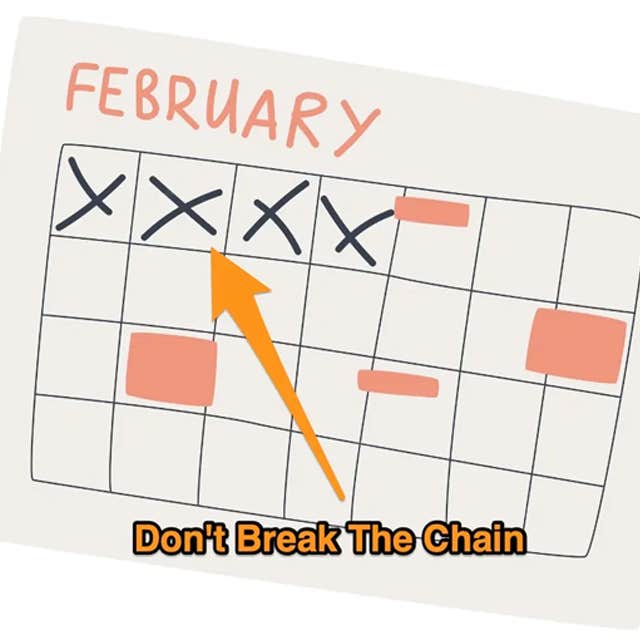
The longer the chain grows, the easier it gets to keep going — the streak itself becomes the reward.
8. Bucket your tasks with "The Two-List" method
Take two minutes each morning to split your To-Do list into two lists:
- The Essentials — these need to be completed at any cost
- The Waiting — can wait until the essentials are tackled
Even if you fail to tick off the Waiting items, finishing the Essentials will feel like a win.
A nice psychological enhancement to the Ivy Lee method.

9. Kill procrastination with "The 5-Second Rule"
We, humans, face more starting trouble than the most worn-down Fiat pickup.
We’ll binge TikTok, refresh our sinking crypto holdings, and stalk our exs’ Instagram — rather than start the 1 task we need to do.
The solution is sudden action — count "5-4-3-2-1" mentally or out loud and start.
Don’t give your brain the chance or time to negotiate you back into procrastination. As Mel Robbins says, "If you get the instinct to work on a goal, you must physically move inside of 5 seconds. Otherwise, your brain will kill it."
Once the engines get roaring, it’s smooth cruising.
What’s rad is that these micro-habits seamlessly integrate with each other:
- Write down six tasks using the Ivy Lee method.
- Use the Eisenhower matrix to split them 50–50 into the Two Lists.
- Time-block the essential ToDos throughout the day, taking advantage of Ultradian rhythms.
- Within each time block, use music-fueled Pomodoro sessions.
- And as procrastination threatens to strike, 5–4–3–2–1 action.
Finally, use the Seinfeld strategy to keep growing the chain of consistency.
Unlike "quick fixes," habits produce lasting effects — but in return, they demand consistency over months, years, and decades.
Be patient — keep ticking off those Xs.
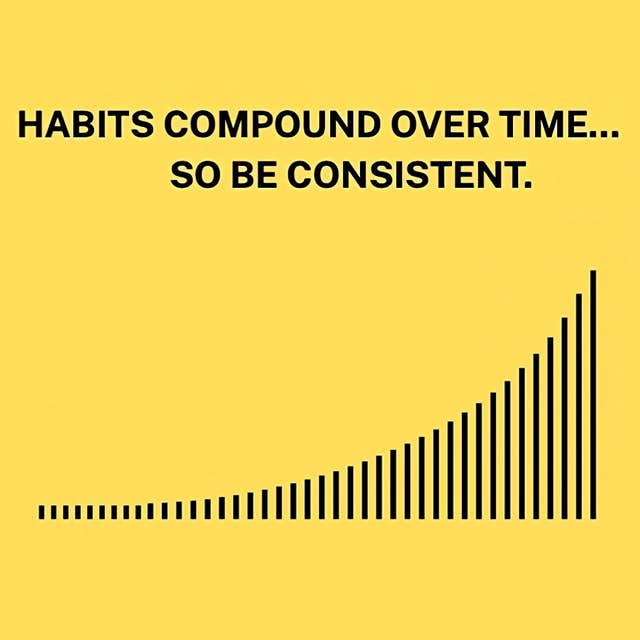
Which of these 9 habits did you like the most? Any other science-backed methods I’ve missed?
I’d love to know.
Neeramitra Reddy is a writer and editor of In Fitness And In Health, Wholistique, and MANXIMIZE.

